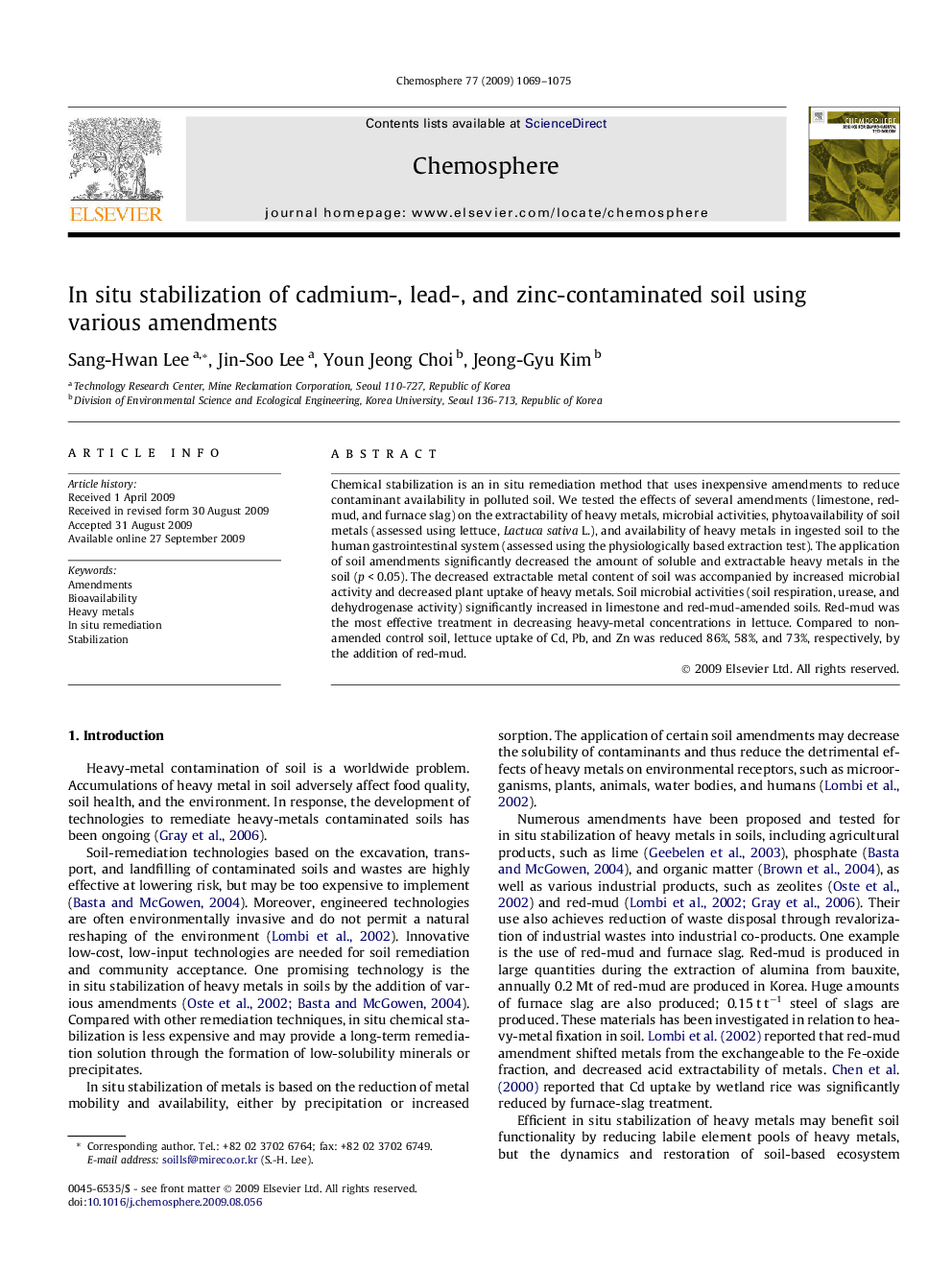| Article ID | Journal | Published Year | Pages | File Type |
|---|---|---|---|---|
| 4412319 | Chemosphere | 2009 | 7 Pages |
Chemical stabilization is an in situ remediation method that uses inexpensive amendments to reduce contaminant availability in polluted soil. We tested the effects of several amendments (limestone, red-mud, and furnace slag) on the extractability of heavy metals, microbial activities, phytoavailability of soil metals (assessed using lettuce, Lactuca sativa L.), and availability of heavy metals in ingested soil to the human gastrointestinal system (assessed using the physiologically based extraction test). The application of soil amendments significantly decreased the amount of soluble and extractable heavy metals in the soil (p < 0.05). The decreased extractable metal content of soil was accompanied by increased microbial activity and decreased plant uptake of heavy metals. Soil microbial activities (soil respiration, urease, and dehydrogenase activity) significantly increased in limestone and red-mud-amended soils. Red-mud was the most effective treatment in decreasing heavy-metal concentrations in lettuce. Compared to non-amended control soil, lettuce uptake of Cd, Pb, and Zn was reduced 86%, 58%, and 73%, respectively, by the addition of red-mud.
